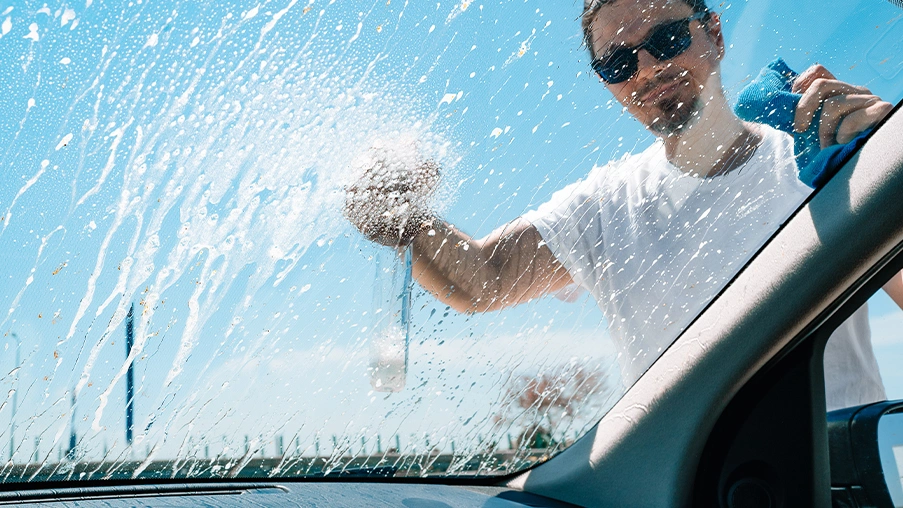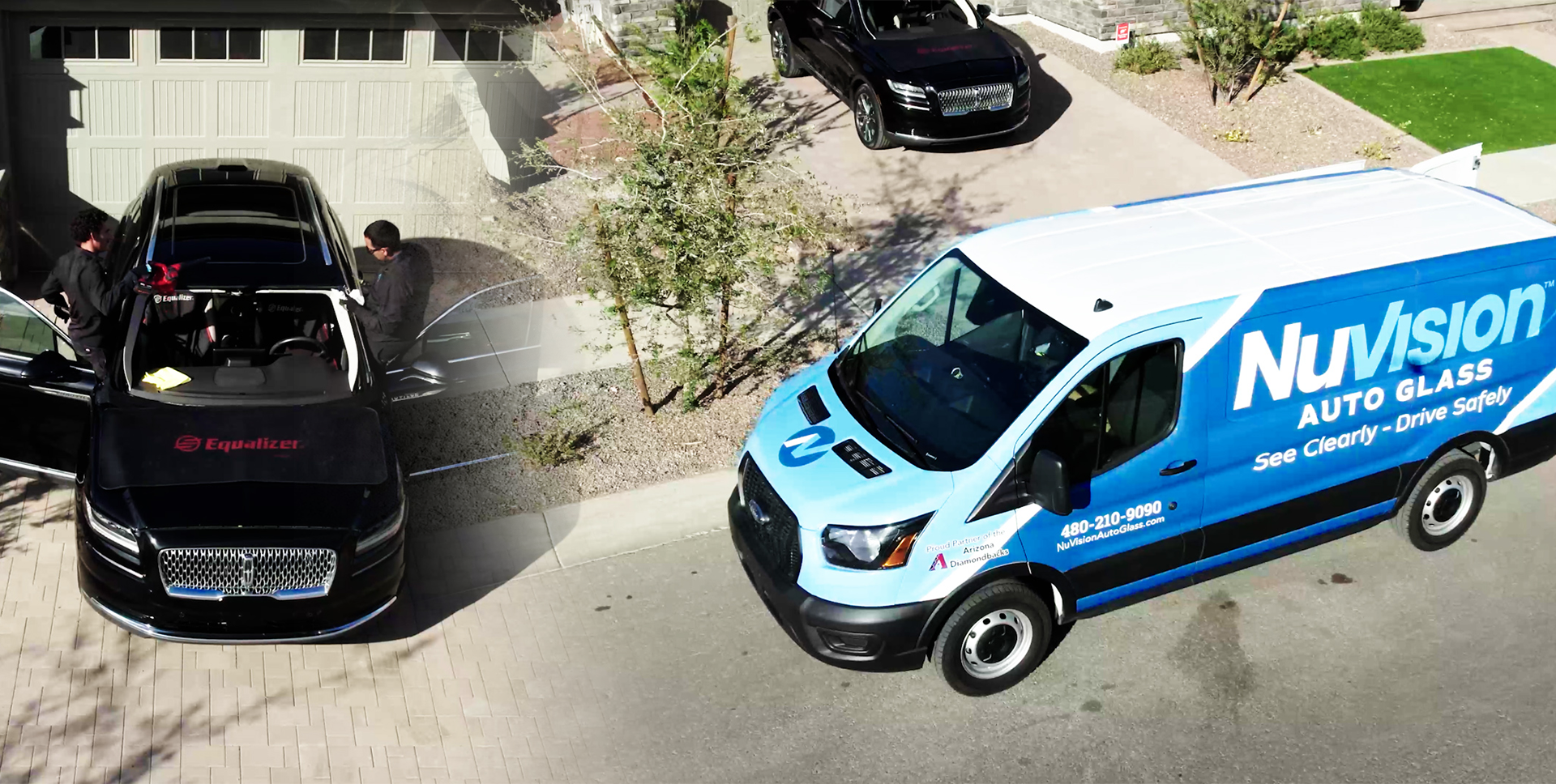How to Polish Windshield Glass: Step-by-Step Guide

If your windshield has scratches, hazing, or water spots, you may be wondering how to polish windshield glass at home. Windshield polishing is a simple and effective way to restore clarity, improve driving visibility, and extend the life of your auto glass.
This guide is designed for car owners who want to remove windshield scratches, maintain safety, or refresh the look of their vehicle after windshield repair or replacement.
Why Polishing Windshield Glass Is Important
Polishing your windshield does more than just make your car look good. Here’s why this DIY task can save you time and money while keeping your car safer on the road:
1. Improves Visibility and Safety
Polishing removes small scratches, water spots, and surface haze that reduce clarity, especially at night or during rain. A smooth windshield enhances your line of sight and reduces glare from headlights.
2. Extends Windshield Life
Surface imperfections can grow into larger cracks over time. Polishing helps prevent wear and tear, reducing the need for frequent windshield repair or replacement.
3. Boosts Your Car’s Appearance
A polished windshield gives your vehicle a clean, well-maintained look. It’s a great finishing touch for car detailing or after auto glass service.
4. Saves Money on Repairs
Polishing is a cost-effective way to delay expensive auto glass repairs or full windshield replacement.
5. Eco-Friendly Maintenance
By extending the life of your windshield, you reduce waste and avoid unnecessary manufacturing impact. Many polishing products are non-toxic and safe for the environment.
6. Enhances Wiper Performance
A polished windshield offers less friction, allowing your wiper blades to glide smoothly. This improves visibility in bad weather and reduces wear on the wipers.
How to Polish Windshield Glass: DIY Steps
Polishing windshield glass is a manageable task if you follow the right process. Below is a detailed guide to help you do it like a pro.
Step 1: Clean the Windshield
Start by thoroughly washing the windshield with a mild soap or automotive glass cleaner. Remove any dirt, bugs, or residue with a microfiber cloth or sponge. Rinse with clean water and dry the surface completely.
Step 2: Inspect for Damage
Look closely at the windshield. Polishing is effective for light scratches, haze, and water stains, but it won’t fix deep cracks or rock chips. If you see serious damage, contact a windshield repair and replacement specialist.
Step 3: Mask Off the Edges
Use painter’s tape to cover trim, paint, and other surfaces surrounding the glass. This prevents polishing compound from damaging nearby areas.
Step 4: Apply the Polishing Compound
Use a product specifically designed to polish windshield glass. Apply a small amount of the compound to a microfiber cloth or foam applicator pad. Rub the compound in small circular motions over the affected areas.
Step 5: Use a Polishing Tool
Attach a soft polishing pad to a dual-action polisher or drill. Keep the speed low to avoid overheating the glass. Work in overlapping circles and monitor the surface regularly to avoid over-polishing.
Step 6: Rinse and Wipe Down
Use clean water to rinse off any remaining polishing compound. Wipe the windshield dry using a microfiber towel. For extra shine, apply a high-quality glass cleaner to finish.
When to Call a Professional for Windshield Polishing
In some cases, polishing might not be enough. Here’s when to skip the DIY and contact an expert:
1. Deep Scratches or Chips
Scratches that catch your fingernail or chips near the edges of the glass often require professional resin filling or full windshield replacement.
2. Persistent Haze or Discoloration
If the windshield remains cloudy even after polishing, it could be due to UV damage or hard water stains that require professional restoration methods.
3. Cracks and Structural Damage
Cracks weaken the windshield’s integrity and are unsafe to ignore. Professionals use special bonding agents or replace the windshield entirely if needed.
4. Repeated Scratches
If scratches keep coming back, you may have worn-out wiper blades or low-quality auto glass. A professional can identify the issue and offer a long-term fix.
5. DIY Polishing Mistakes
Over-polishing, hazy results, or uneven finishes may need to be corrected by trained technicians using commercial-grade tools and glass compounds.
Trusted Windshield Services with NuVision Auto Glass
If polishing doesn’t restore your windshield or you spot cracks that threaten your safety, it’s time to call a trusted provider. NuVision Auto Glass offers:
-
No-cost windshield replacement with insurance
-
Same-day mobile service at your home or office
-
Up to $375 cash back for Arizona customers
-
Certified technicians serving Florida, Arizona, and South Carolina
-
Over 200,000 happy customers and counting
Get a Quote or call now to schedule your appointment.
Final Thoughts
Learning how to polish windshield glass is a smart way to extend your windshield’s life and improve driving safety. It’s a simple, eco-friendly process that any car owner can try.
But if your windshield has cracks, deep chips, or persistent haze, it’s best to contact the experts at NuVision Auto Glass. With quick service, expert technicians, and no-cost insurance coverage, NuVision ensures your windshield is both clear and safe.
FAQs on How to Polish Windshield Glass
Can a glass windshield be polished?
Yes, light scratches, haze, and water spots can be removed by polishing. Use glass-specific compounds and soft applicators for best results.
How can I make my windshield look new again?
Clean it thoroughly, then polish the surface using the steps outlined above. For deep damage, consult a professional for windshield repair or replacement.
Can you buff out scratches on a windshield?
Minor scratches can be buffed using glass polish and a polishing pad. Deeper scratches need expert assessment and possibly repair.

